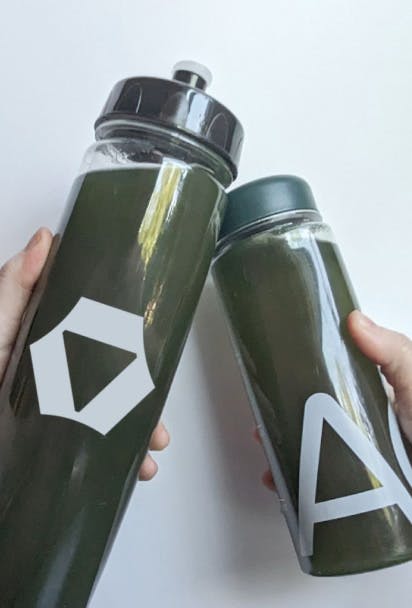Why Apparel Fulfillment Is a Critical Growth Lever
Apparel is one of the most sought-after products in e-commerce. From niche streetwear drops to subscription -based basics and luxury Direct-to-Consumer (DTC) brands, apparel represents one of the most competitive online retail categories. Yet, while the apparel itself drives instant customer acquisition, its fulfillment determines whether buyers stick around for the long-term.
Unlike categories with stable demand year-round, apparel logistics must handle extreme volatility. Apparel demand can be impacted bflash sales, seasonal spikes, viral influencer campaigns, and high return rates. Meeting these challenges requires more than simply shipping boxes, but also a deliberate fulfillment strategy that balances speed, cost efficiency, compliance, and brand control.
For a brand to succeed, you must learn about apparel brand fulfillment best practices, including custom packaging options with third-party logistic (3PL) providers, the impact of DTC packaging compliance regulations, and practical frameworks for scaling from in-house operations to sophisticated third-party fulfillment partnerships.
What Are the Challenges of Apparel Fulfillment
Apparel fulfillment has its own set of challenges, such as:
1. High Stock Keeping Unit (SKU) Counts and Variability
Apparel brands often manage hundreds or thousands of SKUs across sizes, colors, and styles. Seasonal and limited-edition drops add complexity to forecasting and inventory allocation.
2. High Return Rates
Average return rates in apparel is at 30%, with some reports as high as 50%1. It’s not always about the size because about 13% return the items due to receiving damaged goods and 16% due to mismatch in online descriptions or images1. Due to this, reverse logistics becomes as important as forward fulfillment.
3. Volatile Demand
Viral TikTok campaigns or influencer partnerships can cause inventory spikes overnight. Brands must be able to flex warehouse labor and capacity without losing service levels.
4. Customer Expectations
Apparel shoppers expect fast, reliable delivery, and even with free returns included. Brand presentation during unboxing is increasingly viewed as part of the overall product experience.
What Are the Apparel Fulfillment Best Practices
Optimize Inventory Placement
Apparel brands serving customers nationally can’t rely on a single fulfillment center. Long shipping zones increase transit times and costs, risking abandoned carts.
Best Practices:
Multi-node fulfillment: Place inventory across multiple regions (East Coast, Midwest, West Coast) to reduce time-in-transit.
Demand-based allocation: Use historical order data and forecasting to distribute SKUs strategically across nodes.
Safety stock buffers: Account for higher-than-expected order surges during launches or holiday sales.
Action Tip: Use a Warehouse Management System (WMS) that enables real-time inventory visibility across nodes, allowing automated order routing from the closest warehouse.
Build a Returns-First Strategy
Returns are not just inevitable in apparel, but are a core part of the customer journey. Mishandling them breaks trust and retention.
Best Practices:
Clear categorization: Route unworn and resaleable items back into inventory quickly while identifying damaged or non-resaleable goods for donation or liquidation.
Self-service returns portal: Simplify the return experience for customers while reducing manual support overhead.
Returns data analysis: Identify patterns (e.g., recurring size issues with specific SKUs) and feed insights back into product development and merchandising.
Action Tip: Track return reasons at the SKU level and use insights to adjust product descriptions, sizing charts, or photography to reduce future return rates.
Leverage Custom Packaging Options with 3PLs
Packaging is often an overlooked growth lever. For apparel brands, unboxing is the first physical interaction customers have with the brand. Custom packaging options with 3PL providers can reinforce brand identity while managing logistics costs.
Best Practices:
Branded mailers or boxes: Incorporate logos, colors, and messaging to create a memorable unboxing experience.
Eco-friendly solutions: Many apparel customers value sustainability. Recyclable or compostable packaging can build loyalty.
Right-sizing packaging: Optimize dimensions to reduce shipping costs while protecting garments.
Action Tip: Balance brand experience with operational simplicity. Too many packaging variations can slow down packout and increase error rates. Work with a 3PL that supports both branding and efficiency.
Stay Ahead of DTC Packaging Compliance Regulations
Apparel shipments must comply with both domestic and international DTC packaging compliance regulations. Oversights can cause delays, fines, or even denied entry into certain markets.
Best Practices:
Labeling: Apparel packaging must include accurate product details, size, fiber content, and country of origin (per FTC guidelines in the U.S.).
Sustainability regulations: Certain markets (e.g., the EU) enforce strict rules around recyclable or reduced-plastic packaging.
Retailer-specific compliance: Brands selling wholesale in addition to DTC must also meet packaging and labeling standards for retail partners.
Action Tip: Audit packaging annually for compliance across all sales channels. Ensure your 3PL can adapt to evolving requirements—especially if you sell internationally.
Design Fulfillment for Subscriptions and Drops
Apparel brands increasingly rely on recurring revenue through subscription boxes or limited-edition drops. Both create unique fulfillment pressures.
Best Practices:
Subscription kits: Build flexible kitting processes to assemble curated boxes at scale.
Drop readiness: Pre-label and stage inventory before launches to handle sudden spikes in orders.
Surge staffing models: Ensure your fulfillment partner can quickly scale labor during flash campaigns.
Action Tip: Run “mock drops” or stress tests with your fulfillment provider to ensure systems and staffing can handle sudden volume surges without sacrificing accuracy.
Automate Order Routing and Carrier Selection
Apparel orders vary in size and weight, from lightweight T-shirts to heavy winter coats. Manual carrier selection adds unnecessary cost and delay.
Best Practices:
Dynamic routing: Automate carrier selection based on cost, speed, and delivery promise.
Multi-carrier strategy: Avoid reliance on a single carrier to mitigate regional delays or surcharges.
Real-time tracking: Provide customers with proactive updates to reduce “where is my order?” inquiries.
Action Tip: Choose a fulfillment platform that integrates with major carriers and automatically optimizes routes, balancing cost and speed on every order.
Quick Apparel Fulfillment Checklist
To help you evaluate your apparel fulfillment strategies, use the decision-making framework below:
Inventory Management
Are SKUs distributed across multiple nodes for speed and cost savings?
Does your WMS provide lot-level or batch tracking for product recalls if needed?
Returns
Do you have a clear process for resaleable vs. non-resaleable returns?
Is returns data informing product design or merchandising decisions?
Packaging
Are you leveraging custom packaging options with your 3PL while balancing cost and efficiency?
Is your packaging compliant with DTC packaging compliance regulations in all markets served?
Customer Experience
Do you provide accurate delivery promises and proactive tracking updates?
Are subscription boxes or product drops supported with scalable kitting and surge staffing?
Scalability
Can your current fulfillment strategy flex during peak seasons or viral demand spikes?
Do you have contingency plans for carrier delays or disruptions?
Future Trends in Apparel Brand Fulfillment
The next wave of apparel fulfillment will be defined by flexibility and sustainability. Emerging trends include:
On-demand micro-fulfillment centers near urban hubs to enable same-day or next-day delivery.
AI-driven demand forecasting to predict SKU-level demand across regions and prevent stockouts.
Circular logistics models where returned apparel is refurbished, resold, or recycled more efficiently.
Eco-compliant packaging that aligns with stricter sustainability regulations and consumer expectations.
Winning Customers with Flexible Apparel Fulfillment
Scaling apparel fulfillment successfully requires a careful balance of speed, cost control, compliance, and customer experience. From custom packaging options with 3PL providers to ensuring DTC packaging compliance regulations are met, every logistics decision impacts customer loyalty and long-term growth.
Apparel brands that invest in fulfillment best practices today will be better positioned to handle tomorrow’s demand surges, regulatory shifts, and competitive pressures.
To learn how Stord can support your apparel brand fulfillment best practices needs, talk to a fulfillment strategist today.








